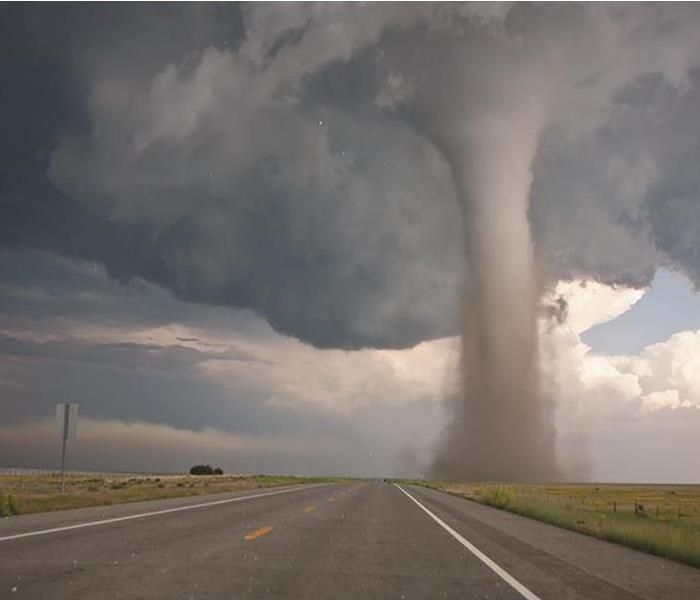Tornado Safety Guide
6/15/2020 (Permalink)
 The Department of Homeland Security notes that there are many things people can do to keep themselves safe from tornadoes before, during and after the
The Department of Homeland Security notes that there are many things people can do to keep themselves safe from tornadoes before, during and after the
Roughly 1,000 tornadoes per year are reported to the National Oceanic and Atmospheric Administration. Tornadoes are intense, violent storms that feature a column of air that extends from a thunderstorm cloud to the ground. Tornadoes can occur anywhere in the world. However, the United States experiences more tornadoes than any other country. According to Verisk’s Property Claim Service, tornadoes accounted for 39.9 percent of insured catastrophe losses from 1997 to 2016, and the average annual loss on these severe storms was $11.23 billion. Tornadoes, although impressive to watch, are volatile storms with great power. They have the capability to flip cars, destroy buildings and send deadly debris flying into the air. Intense winds can reach more than 200 miles per hour.
The Department of Homeland Security notes that there are many things people can do to keep themselves safe from tornadoes before, during and after these storms.
Before
Understand and learn about the risk for tornadoes where you live. People in the midwestern and southwestern United States have a greater risk of experiencing tornadoes than those elsewhere in the country. Establish a safe room in your home, which can be a basement or a cellar. In rooms with no below-ground levels, the safest place is a small, interior room on the lowest level away from windows and doors. Sign up for emergency alert warning systems that cater to your area so you know well in advance if a tornado is coming. Practice what to do in the event of a tornado so the entire family knows what to do if disaster strikes. Keep tornado readiness supplies handy. These include clean water, batteries, flashlights, a battery-powered radio, and packaged, nonperishable foods.
During
Move indoors into a safe location for the duration of the tornado. Tornadoes blow through quite quickly so timing is of the essence. If you cannot get to shelter, lay down flat in a low-lying area. Do not go under a highway overpass or attempt to outrun a tornado in a vehicle. Take additional precautions by shielding your head and neck with your arms or putting furniture and blankets around you to protect against debris. Keep small children and pets close by and protect them as best as possible. Strapping an infant into a vehicle safety seat may be a good safety measure.
After
Assess the situation for safety after the tornado has moved through. Watch for downed electrical lines and check for the smell of gas. Do not turn on any appliances or switches if you detect the aroma of gas. Do not try to move anyone who seems seriously injured unless they are in immediate danger. Call and wait for help if needed. It may take time for emergency personnel to reach you.
SERVPRO of Lexington/Thomasville offers stream response. From roof tarpping, to more serious damage we are available to help 24/7. Give us a call at 336-224-2565 to learn more about our services. For more information on Tornadoes is available at www.ready.gov/tornadoes.






 24/7 Emergency Service
24/7 Emergency Service